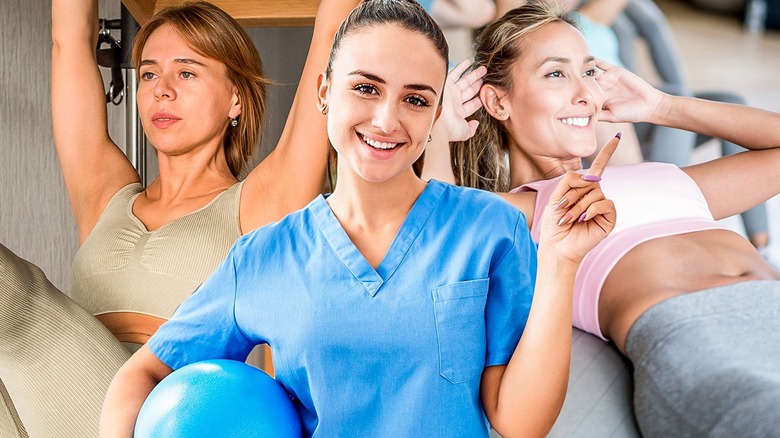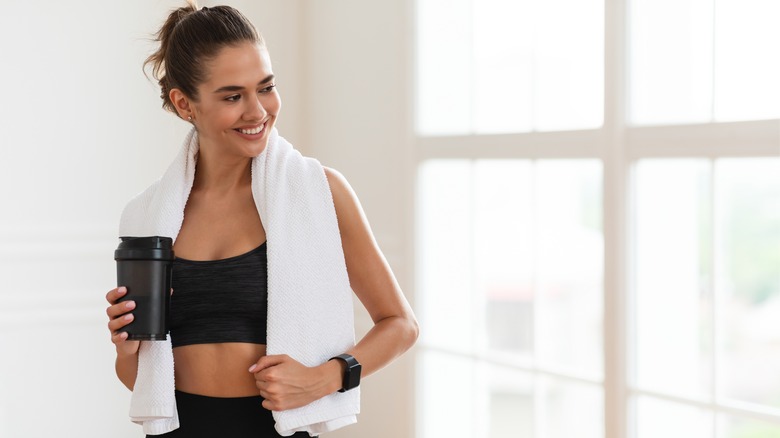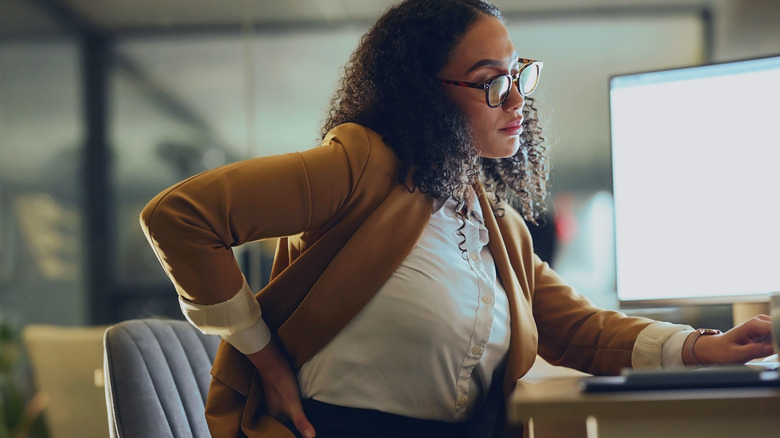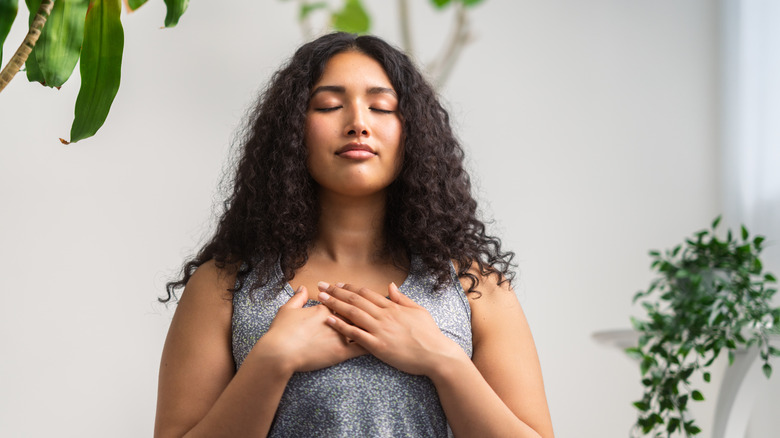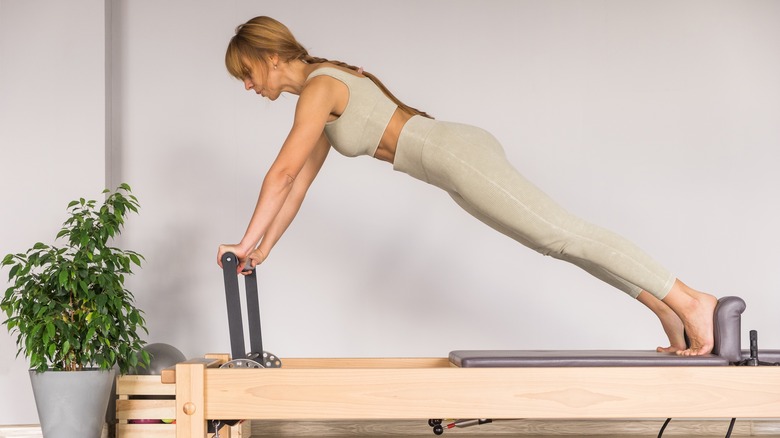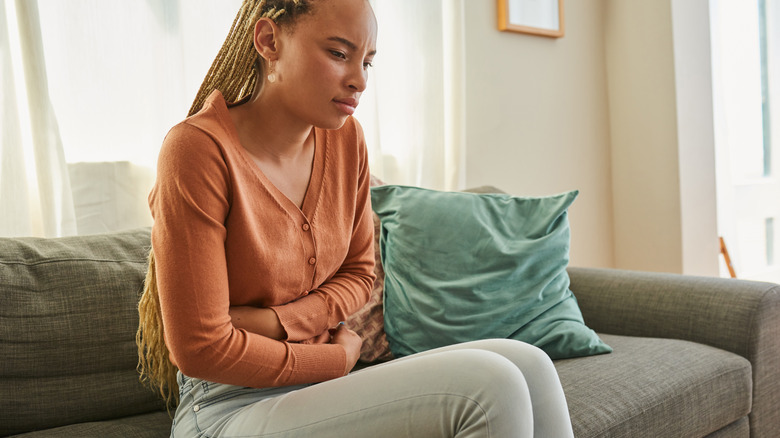Pilates 101: Your Guide To The Benefits & What You Need Before You Start
If you're a fan of yoga or other low-impact fitness regimens, you've likely tried a Pilates class at some point and can attest to how aligned you feel afterward. This whole-body workout combines movement and breath to strengthen muscles and improve flexibility. While the flow of positions may look simple, Pilates is actually quite challenging. If you spend a lot of time at the computer, Pilates could be the perfect way to alleviate tension.
If you're recovering from an injury and can't jump back into more strenuous workouts, Pilates can be adjusted to meet your needs. "Pilates is truly for everybody regardless of age, injuries, and/or level of fitness. A qualified instructor will know what exercises to modify and/or omit based on the individual. Pilates is low impact and should not cause any injuries," Pilates and fitness professional Ethan Carter told Byrdie. This workout can also be easily done from home with little equipment and a virtual guide. If you're ready to explore the realm of Pilates, here's what you'll need before you start – and a refresher on the many benefits you'll reap from the practice.
What you'll need for Pilates
Preparing for Pilates is simple. Wear form-fitting clothes that allow you to move comfortably and confidently. Avoid loose tops since you'll be bending, leaning, and stretching. Dressing in yoga attire is ideal. Pilates classes are usually done barefoot, so no need to worry about footwear. Tie back long hair away from your face and leave dangling jewelry at home.
If you're visiting a Pilates studio, follow their guidelines and suggestions. Some studios provide mats and equipment, but you may prefer to bring your own mat for familiarity. Stay hydrated by bringing a large bottle of fresh water, and pack a healthy snack for after class. If you're not ready to attend in person, consider virtual options. "Virtual classes can be very ground-level and authentic and can introduce you to studios where you can attend live classes if you feel comfortable later on," Gabriela Estrade, a certified Pilates instructor and ACE-certified personal trainer based in New Jersey, explained to Self.
Improves back pain
If you struggle with chronic back pain, it's best to check with your doctor first to confirm that Pilates is safe for you. When done properly, the movements and poses in Pilates classes can greatly benefit anyone suffering from back pain. Two classes a week should suffice when you're just getting started, according to Beth Glosten, MD, Anesthesiologist of Spine-health. Repeated practice and commitment should yield noticeable relief from stiffness and backaches, along with a plethora of other benefits. Pilates is known to strengthen and align the body, making it a great preventative practice for athletes.
"Pilates is a full-body exercise method that will help you do everything better," Sonja Herbert, a Pilates instructor and founder of Black Girl Pilates, shared with Self. "It strengthens and stabilizes your core body, which is your foundation so that you can move efficiently while improving your posture, flexibility, and mobility." Practicing Pilates regularly can improve your awareness of your body and its needs as well as your overall energy levels.
Decreases stress and anxiety
Physical movement and breathwork can alleviate stress and feelings of anxiety. Pilates, being a form of exercise, naturally achieves this as well. In addition, according to Motivate PT CEO Harkirat Mahal, it releases endorphins that leave you feeling lighter than before your practice (via NetDoctor). If you struggle with negative thought cycles, moving your body can help you break out of the loop and find renewal and clarity. "As Pilates is a slower-paced discipline that also focuses on the breath work, it can be extremely meditative and stress-relieving," Zoe Bertali, yoga teacher at studio The Refinery, explained to Harper's Bazaar.
Breaking up your daily routine with a new healthy habit can lead to a change of pace and a significantly improved mood and outlook. If you feel intimidated by starting a new exercise routine and the pressure to commit long-term is preventing you from starting at all, reframe the endeavor. Simply try one class, and then another. There is no need to mark your calendar or chain yourself to the schedule.
Strengthens the core and improves posture
If you have ever seen a candid photo of yourself where your slumped posture is a bit of a surprise and you would like to correct it, practicing Pilates is a great way to start. As you strengthen your core and tone your muscles, standing and sitting tall with ease will become second nature. Without core strength, maintaining an aligned posture can be challenging, requiring focus and effort.
"Pilates is a mind-body workout that targets your core muscles with every exercise," Manuela Sanchez, a Pilates instructor at Club Pilates in Brooklyn, New York, told Self. "It works the abdominal [area] on both a deep and superficial level to achieve true core strength." With the body awareness you'll develop from the practice, you'll quickly notice when your body doesn't feel right and your posture is off. If you have tried back braces and willpower but still struggle to maintain the posture you desire, it's time to strengthen and align your entire body, and Pilates is once again the perfect avenue to do so.
Relieves menstrual pain
This may come as a surprise, but according to a 2023 study published in the peer-reviewed journal Healthcare, Pilates can alleviate menstrual pain. The study found that committing to a 12-week Pilates practice can reduce the monthly discomfort that often accompanies the menstrual cycle. Similarly, research featured in Complementary Therapies in Medicine revealed that Pilates exercises can decrease PMS symptoms. If you weren't already sold on Pilates, let this be your sign.
As we already know, Pilates can lower stress levels, which can also have a positive impact on mood swings and PMS. Despite what you may have heard, gentle exercise can lead to healthier periods. "Towards the end of the luteal phase, you may start to experience PMS symptoms like irritability, fatigue, and breast tenderness. Because it's just before your period, it's a good time to resort to lighter workouts and good form in preparation for the cycle ahead," Leada Malek, DPT, a board-certified sports physical therapist, shared with Byrdie.
You're likely getting the point here: The list of benefits from a Pilates practice goes on and on, from improving back pain and posture to lowering stress levels and improving menstrual cycles. Don't miss out on this one.
